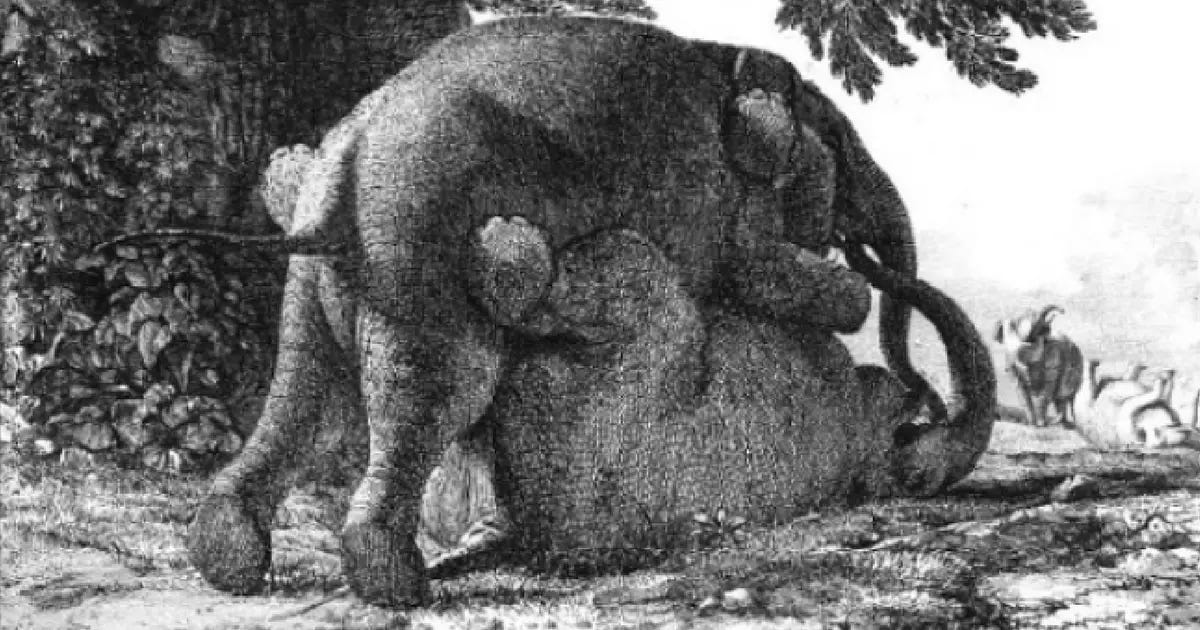I don’t often direct you toward long-ish academic journal articles on musicology.
I don’t that often read long-ish academic journal articles on musicology.
But a few years I came across — don’t remember how — ‘Elephants in the Room: The Future of Quirk Historicism’ by Nicholas Mathew and Mary Ann Smart.
This appeared in the November 2015 special issue of the journal Representations.
And it made me wonder what I’d been at, all those years, in my teaching of fiction and especially non-fiction.
Had I just been encouraging my students to chase quirks?
What is a good detail to include — about a character? about a place?
Mathew and Smart’s argument, distilled, is this —
[In musicology, up until recent years] history often meant ‘‘context.’’ Musical works could be enriched, but at the same time shown to be functional and contingent, by accounts that placed them in ready-made historical frames supplied by the locations in which art was produced or by big-picture histories—the French Revolution, the Third Reich, the Napoleonic Wars.
Since coming under the influence of New Historicism, particularly the writings of Stephen Greenblatt, that has changed.
In the wake of this suspicion of close reading, many musicologists became collectors of curiosities, assembling and scrutinizing disparate objects, events, and documents in order to understand how past communities of listeners and practitioners used music, why they created and cared about the kinds of music they did.
They give an example of the kind of quirky detail musicologists now foregrounded —
In 1798, a pair of Ceylonese elephants recently arrived at the Jardin des Plantes in Paris were treated to a concert—or, really, an experiment to measure natural responses to music on these animals, whose capacities for sentiment were believed to be close to those of humans. An orchestra and chorus from the Conservatoire de Musique performed various types of music for the elephants, who had been given the names Hanz and Marguerite, while a naturalist recorded their reactions. Selections by Gluck, Rousseau, Monsigny, Haydn, and Rameau elicited rhythmic trunk movements matched to the prevailing mood of each piece. The liveliest response was provoked by the revolutionary song ‘‘Ça ira,’’ at which the beasts began to behave amorously—an exciting development, since elephants were thought never to mate in captivity.
When I read all this, I was powerfully reminded of Bruce Chatwin.
He got his start in the world by working at Sotheby’s auctioneers — first by tagging items for sale, and then later learning to deal with collectors of the fine arts, and to catalogue the higher end stuff.
Chatwin developed his eye for inhuman and human rarities, and always loved the unusual.
Later on (and how much am I leaving out?) he wrote his novel Utz about a semi-fictionalised collector of Meissen porcelain, living in Cold War Prague.
Almost everything Chatwin did and wrote depended upon sifting bland everyday experience for the quirky detail.
What Mathew and Smart describe happening in musicology had already been perfected in Chatwin’s first book, In Patagonia (Jonathan Cape, 1977).
This was not conventional travel writing. Influenced by Ernest Hemingway, Robert Byron (The Road to Oxiana) and Osip Mandelštam (most of all ‘Journey to Armenia’), it was a minimal distillation that left out all the in-between bits.
If Chatwin wrote about a person he had encountered — say, a pianist — you knew they were not ordinary. In fact, the chances were, they were an undiscovered Southern American Glenn Gould.
This was an aestheticized view of the world. Just as in the Sunday Times magazine articles where Chatwin refined his styles of writing and living, between 1972 and 1974, everything was curated, bespoke, tagged and even poverty looked chic.
By 1975, Chatwin could barely look at a mountain without pricing it up.
And the influence of this, although perhaps obscured by Chatwin’s fall from his high place, continues today.
Sometimes the influence is that of resistance. WG Sebald didn’t so much chase quirks as always everywhere encounter the same distillations of recklessness, cruelty, slaughter. But how Sebald uses a detail often has a touch of the Chatwinesque.
Here is just a snippet of Major George Wyndham Le Strange from Sebald’s The Rings of Saturn (The Harvill Press, 1998) —
Le Strange, who had always kept a tame cockerel in his room, was reputed to have been surrounded, in later years, by all manner of feathered creatures: by guinea fowl, pheasants, pigeons and quail, and various kinds of garden and song birds, strutting about him on the floor or flying around in the air. Some said that one summer Le Strange dug a cave in his garden and sat in it day and night like St Jerome in the desert. Most curious of all was a legend that I presume to have originated with the Wrentham undertaker's staff, to the effect that the Major’s pale skin was olive-green when he passed away, his goose-grey eye was pitch-dark, and his snow-white hair had turned to raven-black.
This is visual, memorable and prints the legend.
There is more to say about this, but for today I’ll leave you where I’ve reached —
Suspicion of our constant quest for quirkiness, and a concern about all those large and important and sometimes grey things we might be unable or unwilling to see, because we know they are too plain for us to include in our writing, because they’re not cute enough.




Another aspect of quirkiness is obvious from the final engraved plate, 'Simulacre des instants de la génération chez les éléphants'. Artists often have a morbid wish to humanize the strange and fantastical. Hence we see Hans & Marguerite promoting their missionary work from Ceylon, via the Hague, to Paris in far too obvious a manner.
“If you set out to write a poem about two [elephants] f***ing, and you write a poem about two [elephants] f***ing, well, then you wrote a poem about two [elephants] f***ing.”